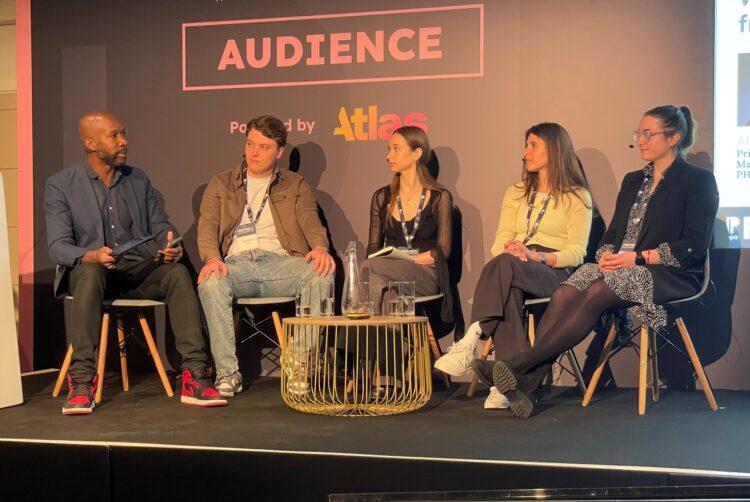What do planners want from publishers? ‘Audacity and arrogance’

How do you promote a media channel whose audiences are on the decline?
According to a panel of young media planners, print publishers need to be louder and more aggressive when selling themselves as a medium with a lot to give.
As Sorcha Ince, strategic planning manager at Manning Gottlieb OMD, told the audience at the PPA Festival last month: “Campaign for yourselves with the same audacity and arrogance as Meta campaigns for itself.”
“I would love to see digital not come to dominate everything,” she continued. “Be punchy. Be out there. How much adspend is Google and Facebook spending on advertising itself?
“I can’t remember the last time I saw an ad from any publishing title, but I can remember the last thing I saw from Meta or even TikTok. I want the publishing industry to have more prominence and energy. As a planner, I need that engagement.”
Ince was joined by other early- and mid-career planners at the session: Alex Groom, print and audio manager at PHD; Rachel Haron, publishing director at Goodstuff Communications; and Ellis Jacobson, comms planning account manager at EssenceMediacom.
Jacobson agreed that publishers are not actively engaging advertisers enough. “More of the digital and social channels are so proactively trying to show us new innovative formats and new ideas that they have,” she added. “And I guess there’s not so much of that, that I personally get from publishers. That would be nice to see moving forward.”
Brand loyalty beyond print
A core challenge facing publishers, especially those with a long legacy in print, is that audience measurement has been working against the channel for years now. As such, the panellists suggested that more needs to be done to pivot how publishers are communicating to market.
“[The ABCs] are really important, but we’ve almost got to think further than that,” said Haron. “Because it is quite a negative picture in magazines, but then you’ve got the readers there that are still picking up that magazine that are so loyal to that brand.
“I think we need to focus on that, rather than just how many copies are being sold or distributed in shops.”
Consumer ABCs 2023: Magazine circulations trend downwards despite growth in some titles
Haron acknowledged that the primary need for media buyers is to reach audiences. “They’re not necessarily there in print, but they might be there in social, at events, on digital,” she explained, urging publishers to lean further in to cross-platform opportunities.
She added: “Print, I don’t think, is going to continue as strongly. But that comes with seeing readers transition to different platforms. You’ve still got your brand loyalty there.”
Jacobson noted that advertisers must be actively reminded about publishing’s strengths. In particular, traditional channels like linear TV, OOH and print offer a high level of signalling strength, in part because they are trusted and premium media environments.
“While social media is so important to our younger and upcoming generation, having that signalling strength from those core channels is something we’re able to sell into our clients to make a really effective case for cross-platform and cross-channel [campaigns],” Jacobson explained.
Pros and cons
The planners were asked to elaborate on the cases for and against publishing when it comes to getting it on the media plan.
One issue is that publishing can struggle relative to other channels depending on a given brand’s choice of KPIs. For example, Haron admitted that if an advertiser wants to go after reach, print publishing “isn’t going to win”. Likewise, she added: “Generally speaking, we don’t see younger audiences indexing that well against magazine brands, newspaper brands.”
Other concerns include longer lead times compared with digital and the wariness around declining audiences.
Advertising generates profit, but not all media channels are equal
A more bullish take was offered by Groom, whose statement that “I don’t know why anyone’s not using print” garnered applause from the audience of publishers. He argued that publisher brands are highly trusted by their audiences and are generally consumed as a “sole-attention” channel, unlike TV or social, which are more likely to suffer from dual-screening.
Furthermore, publishing performs well in econometrics studies, can offer contextual relevance to passionate and loyal audiences, and there is more room for creativity in print ads than digital display.
Still, as younger planners enter the workforce, publishers and other more traditional channels need to up their game to communicate their appeal.
“As someone who hasn’t necessarily grown up reading print or newspapers, we have social media in front of us at all times,” expressed Jacobson. “I feel like we need to be given that insight from publishers, whereas we have social media that speaks for itself.”
The panel session was chaired by The Barber Shop founder Dino Myers-Lamptey.




